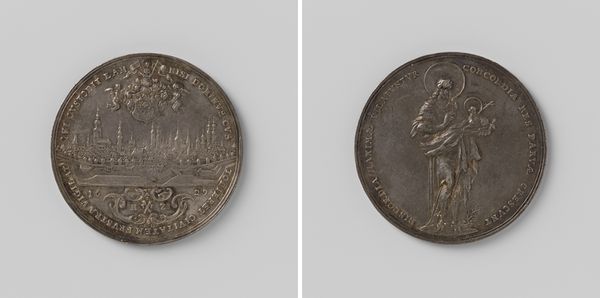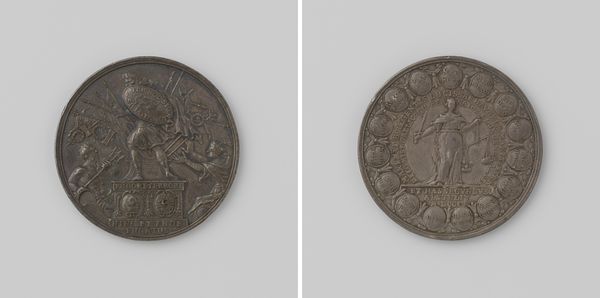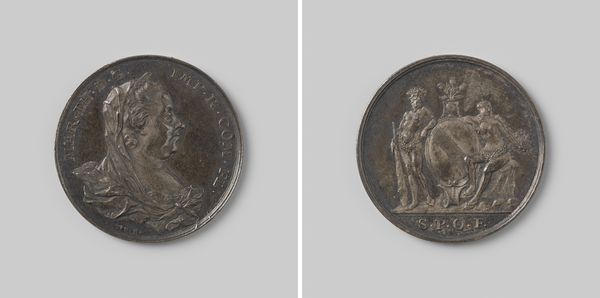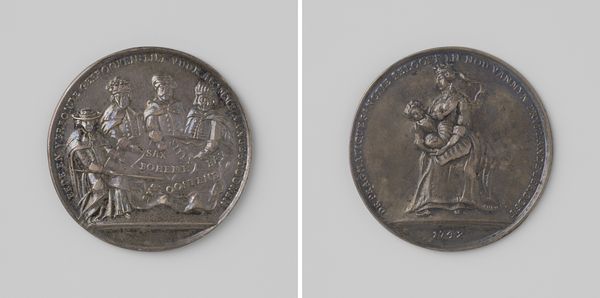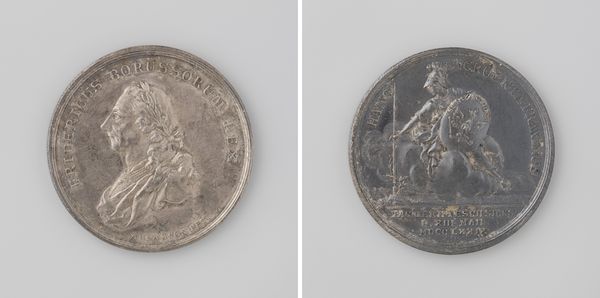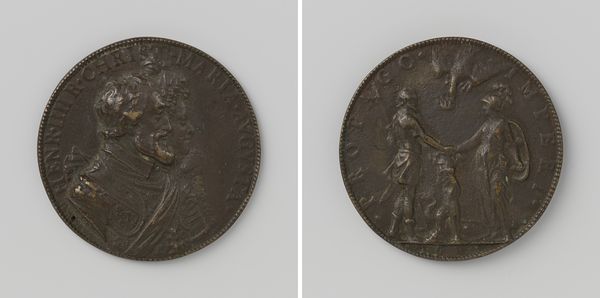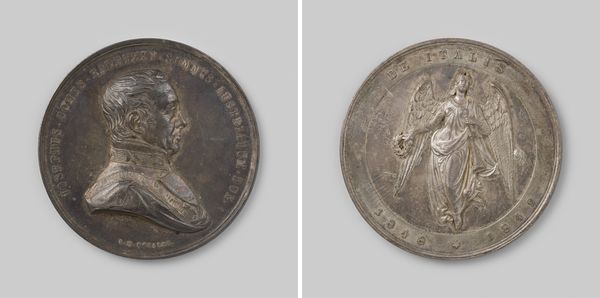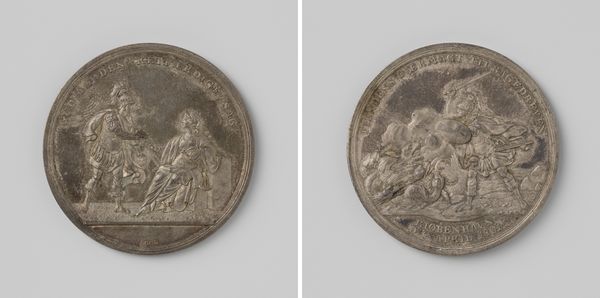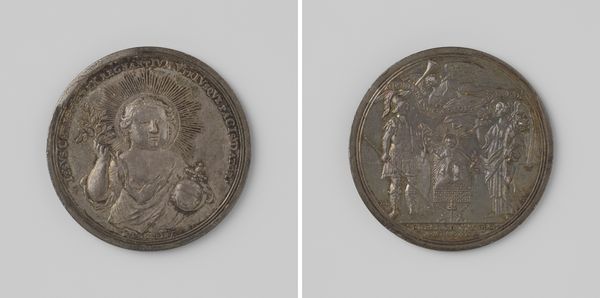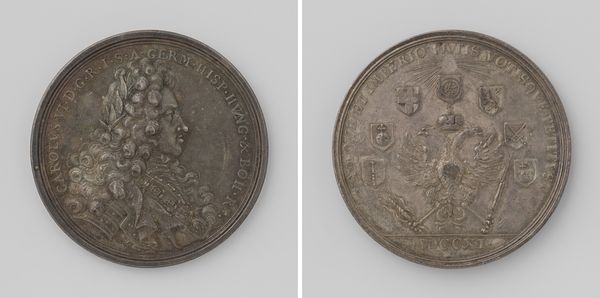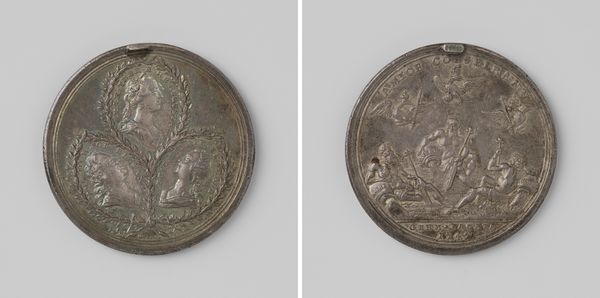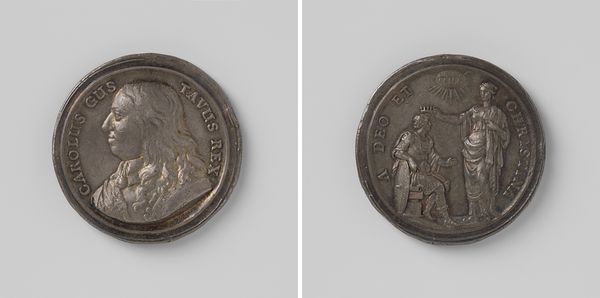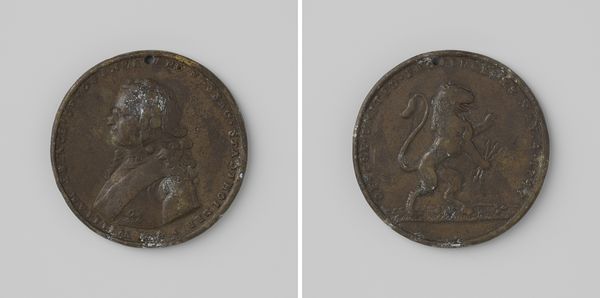
Dimensions: diameter 3.8 cm, weight 168 gr
Copyright: Rijks Museum: Open Domain
This silver medal, created by Eise Andeles in 1765, is rich with symbolic imagery reflecting the era's values and aspirations. On one side, we see a seated female figure, likely representing Felicitas, the Roman goddess of good luck and success. She holds a caduceus, a symbol of commerce and negotiation, suggesting prosperity and divine favor. On the opposite side, putti frolic amongst symbols of agriculture and abundance, signifying a plentiful harvest and the rewards of cultivation. Consider the putti, which have evolved from ancient Greek Eros figures to Renaissance cherubs, signifying a connection to classical ideals, reborn. The circular form, with the putti dancing in the round, mirrors the cyclical nature of the seasons. The medal acts as a talisman against uncertainty, expressing a deep-seated human desire for stability. This powerful emotional appeal engages viewers on a profound level, tapping into our collective memory of nature and human potential.
Comments
No comments
Be the first to comment and join the conversation on the ultimate creative platform.

